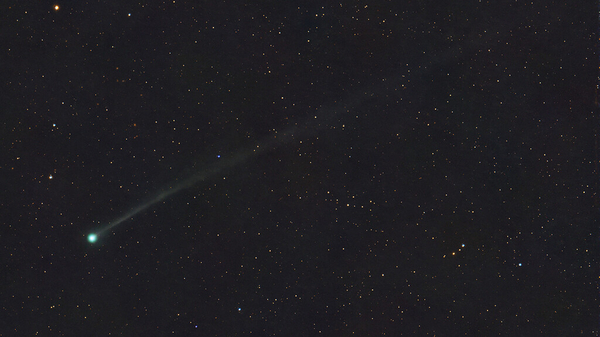
Comets Are Hard to Predict
Skywatchers have a new object to find—but it is unlikely to become easily visible with the naked eye.
At the moment, comet C/2025 F2 (SWAN) appears in the morning sky, low on the eastern horizon before dawn. Toward the end of April, it will move into the evening sky—close to the western horizon after sunset.
Find and track C/2025 F2 (SWAN) on our Night Sky Map for your cityAlthough C/2025 F2 (SWAN) is unlikely to be bright enough to see easily with the naked eye, a popular phrase among comet experts is But who knows?
—the behavior of comets is extremely difficult to predict!
Either way, the best chances to see the comet will likely fall to observers in the Southern Hemisphere in May.
WARNING: Never point binoculars or a telescope in the direction of the Sun—it can cause permanent eye damage. DO NOT try to observe objects while any part of the Sun is above the horizon.

What’s with the Name?
The names given to comets include a reference to the person or team that made the discovery. But things aren’t always completely straightforward.
In the case of this particular comet, SWAN refers to the Solar Wind Anisotropies (SWAN) instrument on board the Solar and Heliospheric Observatory (SOHO)—a spacecraft built to study the Sun.
“The comet is named after the SWAN instrument, because it was first seen in SWAN imagery,” explains timeanddate.com astrophysicist Dr. Renate Mauland-Hus.
“However, we should also give credit to three amateur astronomers who actually found the new comet within the SWAN images: Vladimir Bezugly, Michael Mattiazzo, and Rob Matson.
“In addition, there are many others who helped track the comet and provide data. There’s a lot of great work that goes into discovering, reporting, and tracking new comets.”
